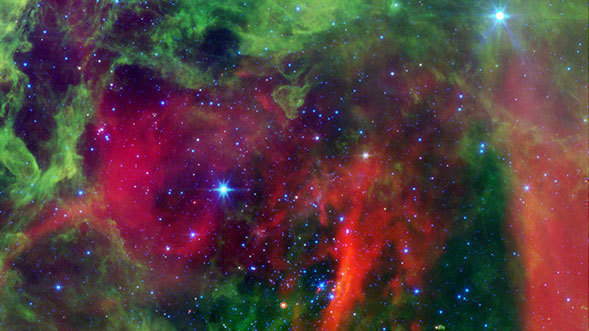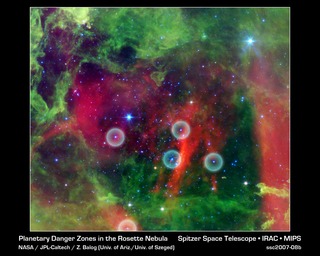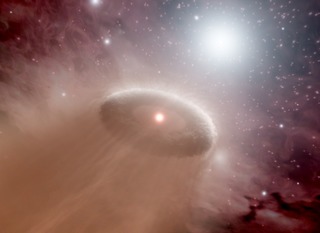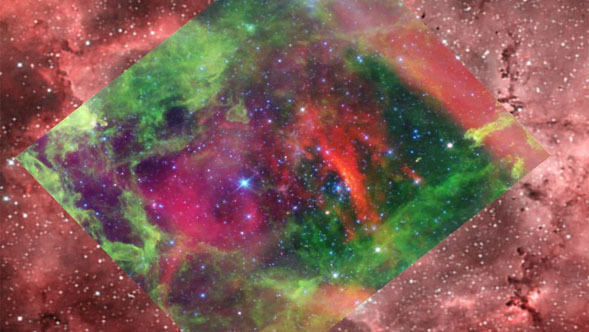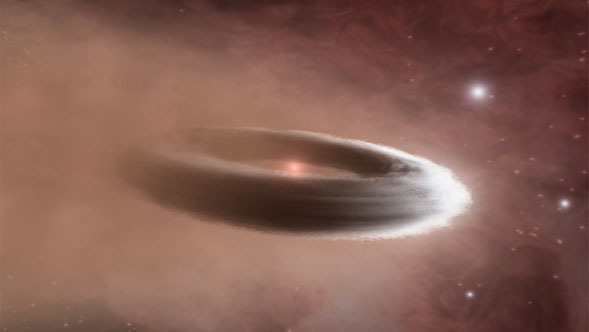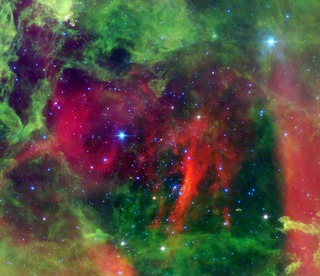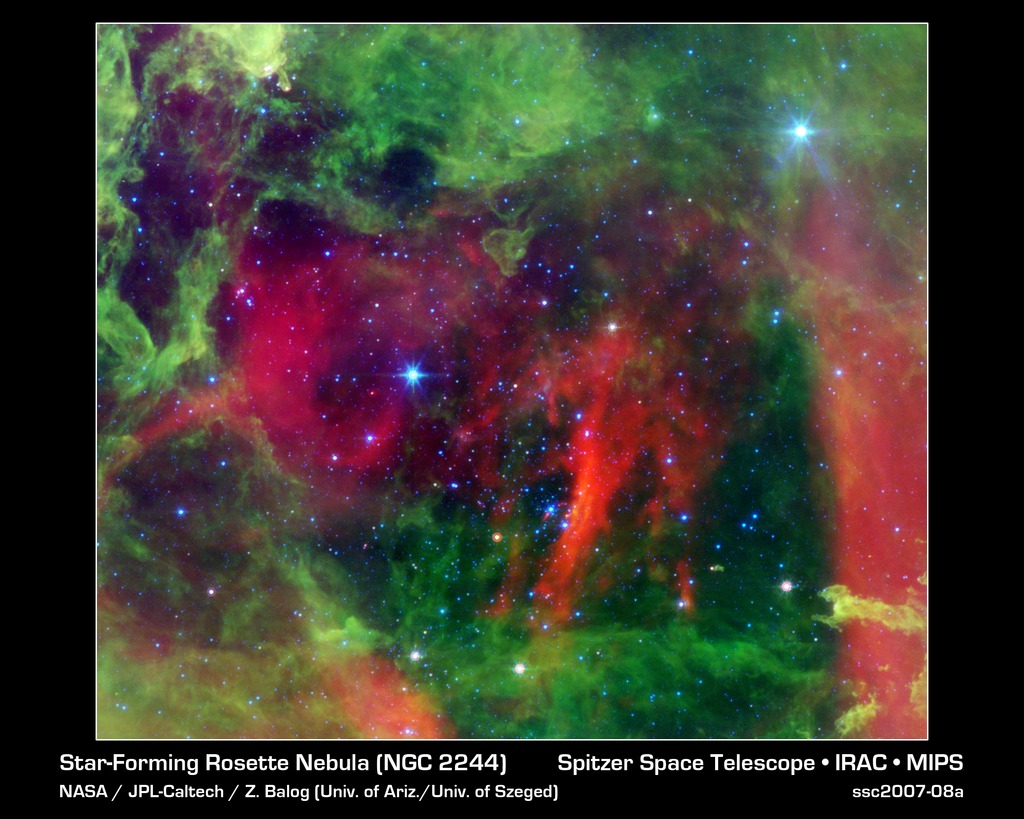
Credit: NASA/JPL-Caltech/Z. Balog (Univ. of Arizona/Univ. of Szeged)
Observation • April 18th, 2007 • ssc2007-08a
ssc2007-08a
This infrared image from NASA's Spitzer Space Telescope shows the Rosette nebula, a pretty star-forming region more than 5,000 light-years away in the constellation Monoceros. In optical light, the nebula looks like a rosebud, or the "rosette" adornments that date back to antiquity.
But lurking inside this delicate cosmic rosebud are super hot stars, called O-stars, whose radiation and winds have collectively excavated layers of dust (green) and gas away, revealing the cavity of cooler dust (red). Some of the Rosette's O-stars can be seen in the bubble-like, red cavity; however the largest two blue stars in this picture are in the foreground, and not in the nebula itself.
This image shows infrared light captured by Spitzer's infrared array camera. Light with wavelengths of 24 microns is red; light of 8 microns is green; and light of 4.5 microns is blue.
About the Object
- Name
- Rosette Nebula • NGC 2244
- Type
- Star > Spectral Type > O
- Nebula > Type > Star Formation
- Nebula > Appearance > Emission > H II Region
- Nebula > Appearance > Dark
- Distance
- 5,200 Light Years
Color Mapping
| Band | Wavelength | Telescope |
| Infrared | 4.5 µm | Spitzer IRAC |
| Infrared | 8.0 µm | Spitzer IRAC |
| Infrared | 24.0 µm | Spitzer MIPS |
Astrometrics
- Position (J2000)
- RA =6h 32m 16.9s
- Dec = 4° 55' 25.1"
- Field of View
- 33.9 x 29.3 arcminutes
- Orientation
- North is 85.7° right of vertical
